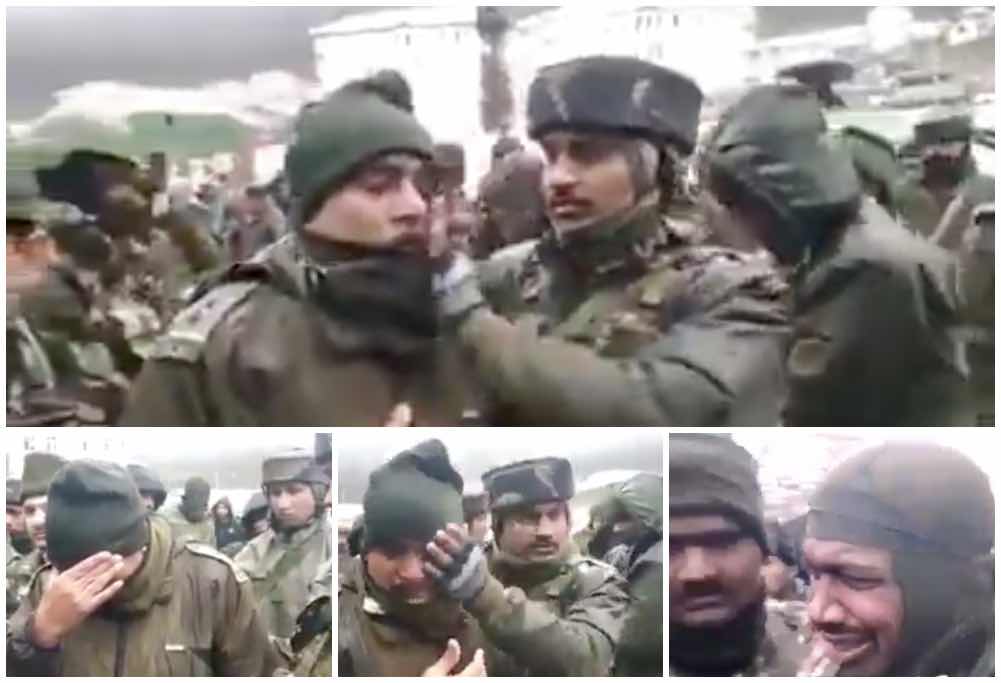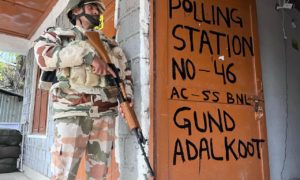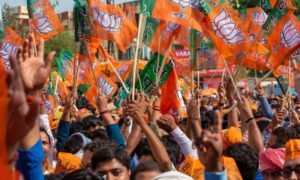Even before a fierce February bid adieu to Kashmir, a small hamlet in faraway north had already turned into a battleground for the armed forces and a militant duo. As the 72-hour-long gunfight ended consuming eight lives, the trail of destruction and despair once again went unnoticed under the larger bilateral belligerence.
After 12-hour-long fierce fireworks—rattling the unruffled ambiance of a non-decrepit hamlet, sending natives into a tizzy—since the first militant-military contact in the intervening night of February 28-March 1, a fleeting silence had finally dawned on Handwara’s Babagund countrified zone. With the last gun assumed to have fallen silent, the trapped insurgent duo was now believed to be killed.
The cordon-trap was slowly being lifted and the police party had begun the search operation to retrieve the dead bodies of rebels – generally piled under the debris of a burnt-down residence, a “safe house”, in official lexicon.
About sixty families were locked-in, and so far, two houses had been razed to the ground. What felt like ‘qayaamat’, according to many villagers, was now supposedly over.
But, was it?
Nearly half an hour had passed by and with each passing minute, the search for remains only intensified. The combing operation had been going under the watch of several senior police officers – including SP Handwara, Ashish Mishra – but none could ascertain the mystery.
The dead were to be found nowhere – because – they were alive!
Both the militants belonging to Lashkar-e-Taiba outfit – Abu Ismail from Pakistan and a Sopore boy Ishfaq Mir – fighting hand-in-hand, had pulled off a dramatic escape during the final blast-to-kill attack launched by the Army. They were now in a small cowshed, just meters away from the spot – where their targets looked clear and vulnerable.
And with that, out came the duo, blazing indiscriminately with their heavily-loaded AK-47s at the Indian camp – for whom – the dead had risen like a phoenix. In no time, the entire counterinsurgent column scattered across –ducking the wild-bullets, looking for a safe-shelter – to escape from the dreadful sight of two militants going berserk.
It was like every man for himself, but except for two policemen, Ghulam Mustafa and Naseer Ahmad – the close escorts of SP Mishra.
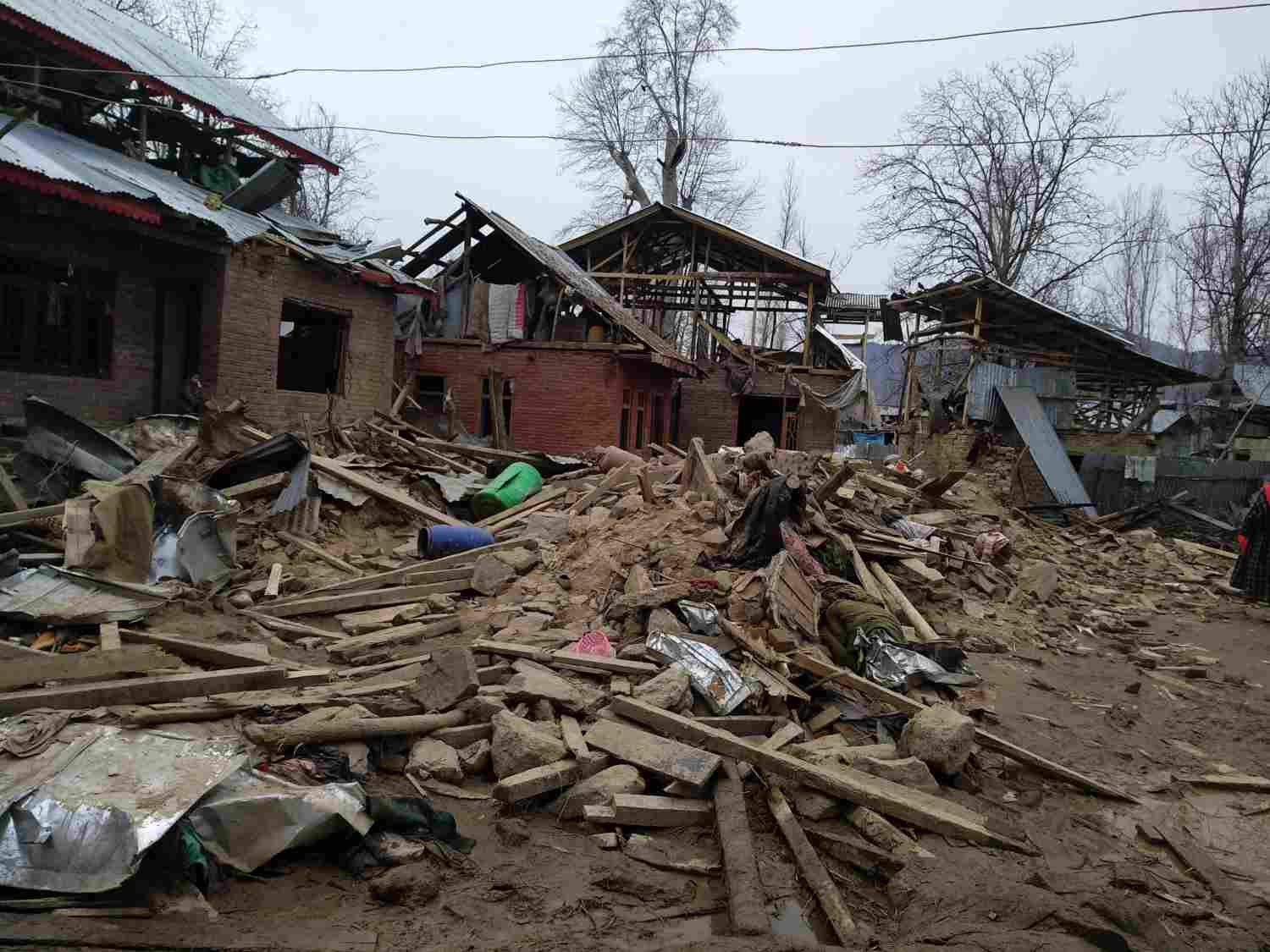
The area where militants came out and started firing. (FPK Photo/Zishan Amiri)
With a spree of wild gunshots triggering a riot-run, Naseer from one end and Mustafa from the other ran alongside SP Mishra to find the officer a safe roof. Even as one of the bullets killed Naseer midway, Mustafa did not back down. He was also shot at, but he breathed his last only after safely rescuing his senior.
And with that, the duo discharged their duties – one final time.
Naseer hails from Gund Gajran of Karnah, a village in far-uphill north, about 180 kilometres from Srinagar.
In winters, Karnah entirely cuts off from the rest of the valley due to road blockage. His bullet-riddled body had to be airlifted for the family to perform the last rites. The slain cop is now survived by parents, a young widow, 2-year-old son and 4-year-old daughter.
While his counterpart, Mustafa, comes from Dogripora in Zachaldara, Handwara district – which is still draped with snow.
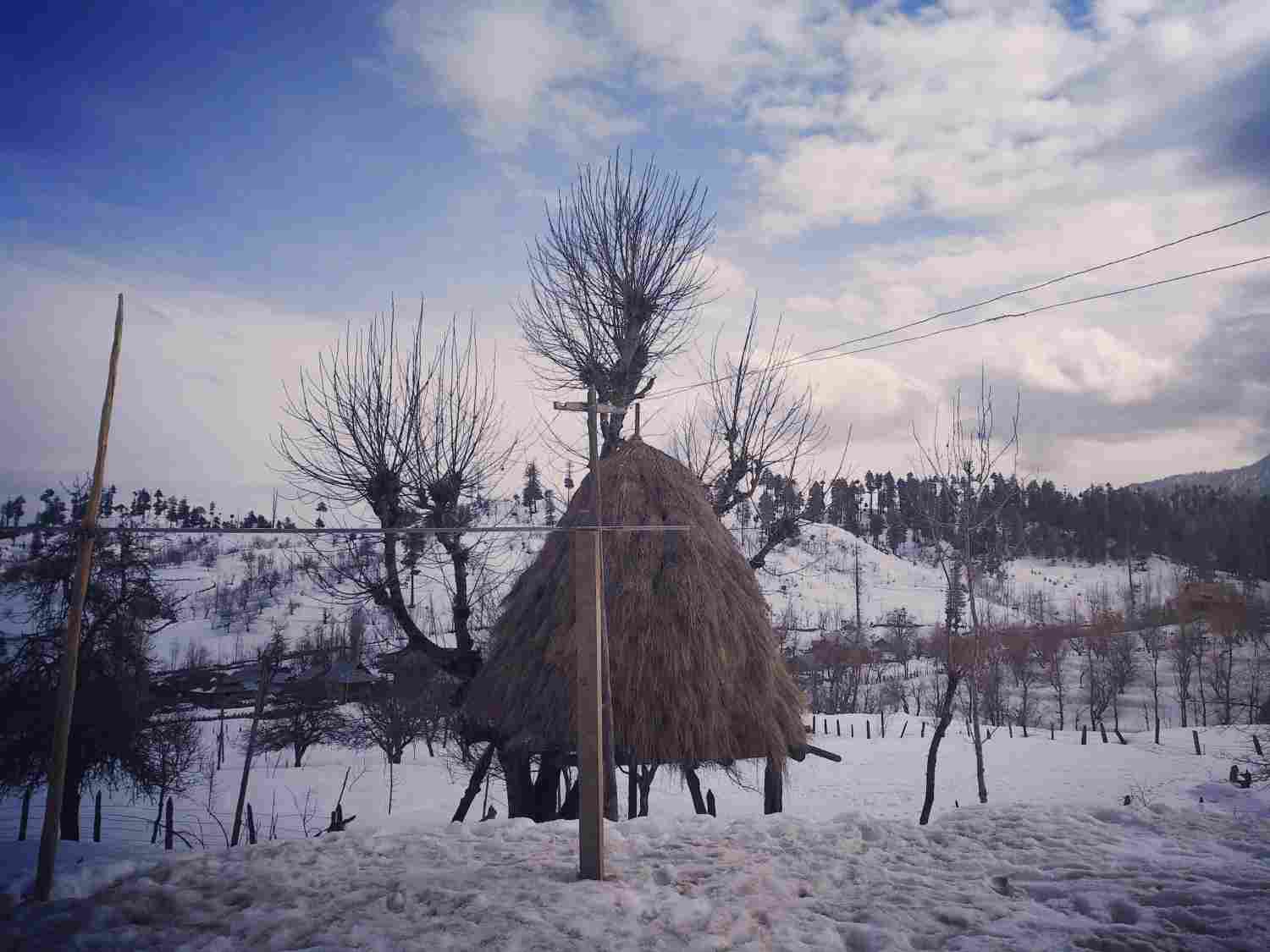
A view of Dogripora, Ghulam Mustafa’s village. (FPK Photo/Zishan Amiri)
Three more men from the Central Reserve Police Force had died in that wild rampage. When their dead bodies wrapped in plastic bags were brought out of the gunfight site, many Indian troopers cried like babies.
The ‘breakdown’ scene captured on camera went viral on social media and made many to assert—“Perhaps, now, New Delhi should rise above its martial rigidity to resolve the pending political problem; if not for the sake of Kashmiris, then, at least, for these poor Indian troopers who’re getting consumed in the Kashmir conundrum.”
But, in the times when an advertisement spreading Hindu-Muslim harmony is outrageously becoming the talk of town, the video of CRPF men crying over their departed colleagues is something not many batted an eye on – neither the highly patriotic mainland crowd nor the prime-time anchors.
CRPF men broke down after bodies of their colleagues were put in a Vehicle. Two CRPF men and two J&K Police men were killed in an Encounter in Langate Handwara yesterday. Ye Kashmir main ab roaz ki kahani hay. Aakhir kab tak pic.twitter.com/ymCgE2xzCs
— Rifat Abdullah (@rifatabdullahh) March 2, 2019
In the words of Mustafa’s widow, Mariyam Begum: “It’s easy to call for a war, but difficult to actually witness one.”
Mariyam and Mustafa had been together from the past 31 years—“until one cursed day,” she laments, “he left me and went away.”
The slain cop’s wretched partner has now become one of the thousand widows in the three-decade-long armed conflict in Kashmir. Mustafa was his family’s sole breadwinner, and now with his death, his widow is concerned about her two unmarried daughters and two school-going sons.
“Who’s going to look after them?” she asks with a blank face. “Our hearts are broken!”
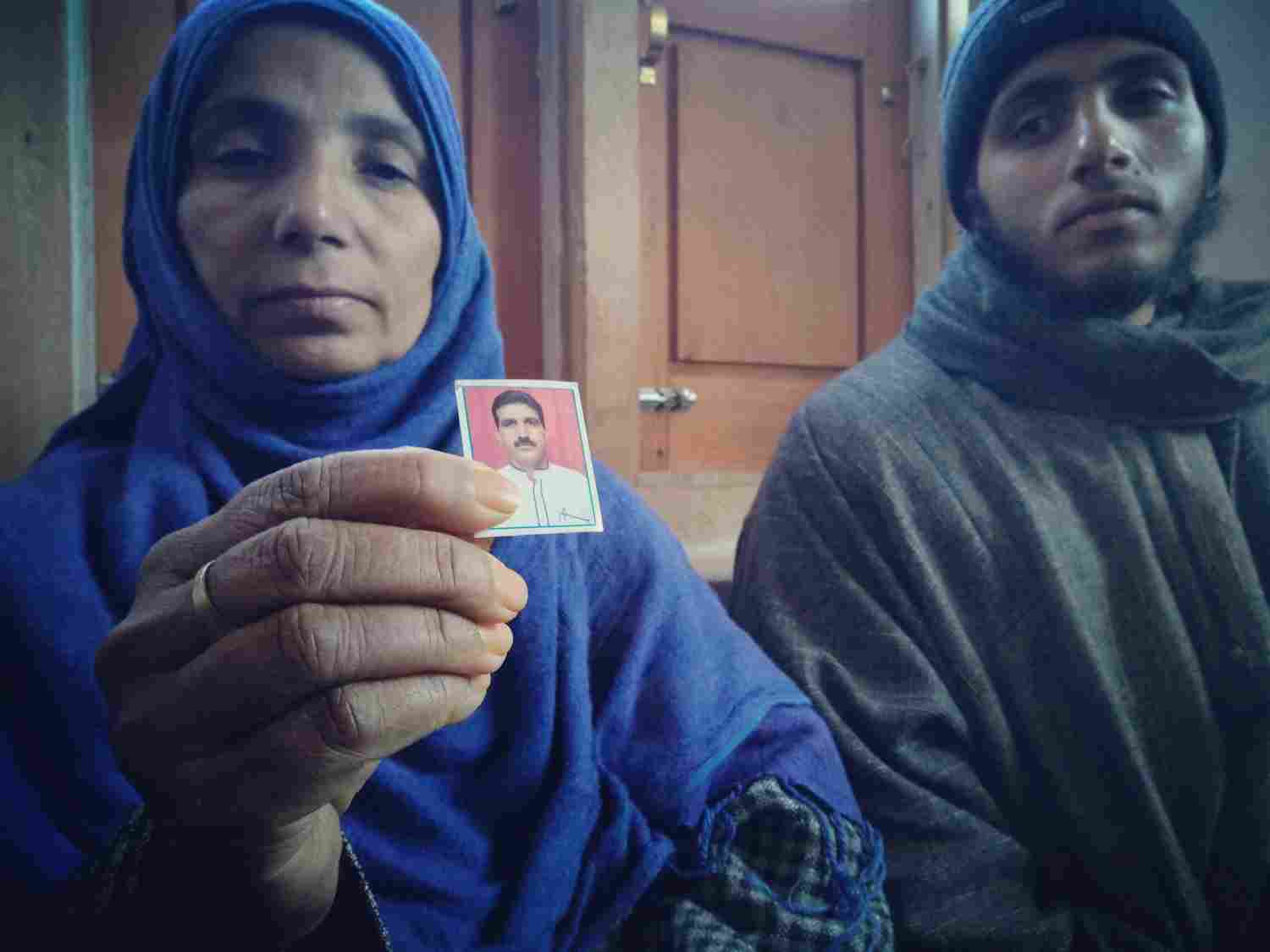
Mariyam Begum, holding the picture of Mustafa, with her son. (FPK Photo/Zishan Amiri)
Back to the battlefield, the gunfight was now renewed, and for the locked-up families in Babagund, the fearful sound of IED blasts and gunshots had again come back to haunt them.
It was Friday evening, and the two militants, Ishfaq and Ismail, post the rampage, had been preparing for a long battle ahead. The counterinsurgent camp was fumed over the loss of their five men.
The cordon was brought-in, and to further ensure zero escape of the militants, around eight more neighbouring hamlets were sealed up.
According to the locals, the militants continued giving armed forces a tough time by frequently changing their bases. Only after ten houses were burnt-down in total, of which seven completely razed to the ground, the gunfight concluded after three days, on Sunday, March 3, at around 4:00 pm.
A class 10 student, Waseem Ahmad Mir, was also killed during the stone-pelting clashes near gunfight area – taking the final toll to eight.
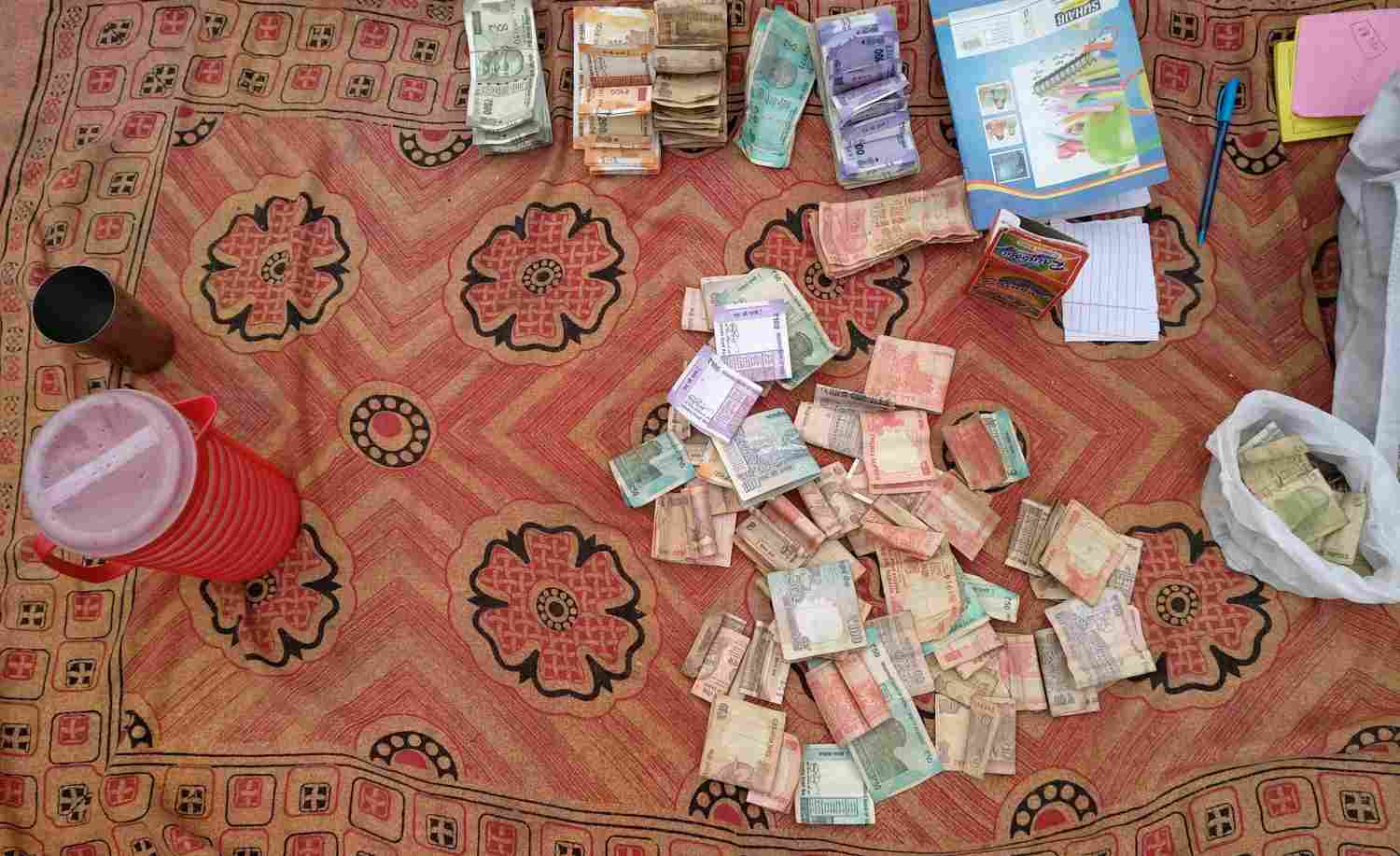
Donations being collected for the families rendered homeless in the gunfight. (FPK Photo/Zishan Amiri)
For Kashmir, this was a third such drawn out gunfight in a span of three months – two having taken place only post the February 14 suicide attack that killed 49 CRPF men. Pertinently, in all the three cases, there was at least one foreign militant fighting alongside local recruits.
The first long drawn affair was that of Mujgund in the month of December, where a Lashkar commander namely Ali Bhai alongside two teenagers from Hajin fought for 18 long hours. The second came just four days post the Pulwama attack, which also went on for 18 hours – with a local recruit and a highly-trained Jaish-e-Mohammad commander Kamran killing four army men and a cop.
Then, followed the 72-hour-long Babagund battle—leaving behind a near dozen homeless families, the twin cop widows and their orphans, and the crying paramilitary men.
In fact, since the Pulwama suicide attack, a total of 12 armed personnel have been reportedly killed, fighting 11 militants in at least five separate armed clashes.
But amidst larger India-Pak tensions, all of it has got heavily downplayed under the narrative of ‘strictly internal matter’.
Like this story? Producing quality journalism costs. Make a Donation & help keep our work going.


